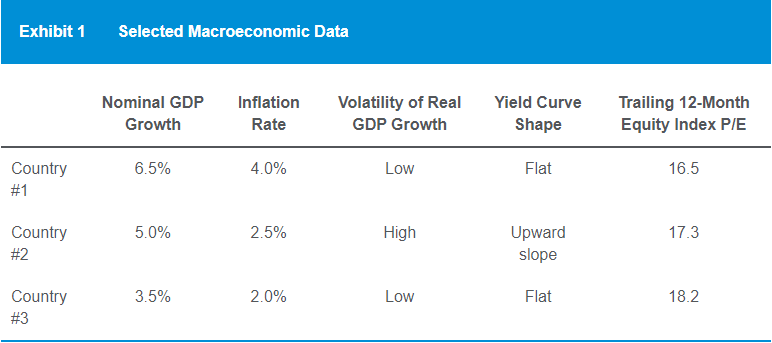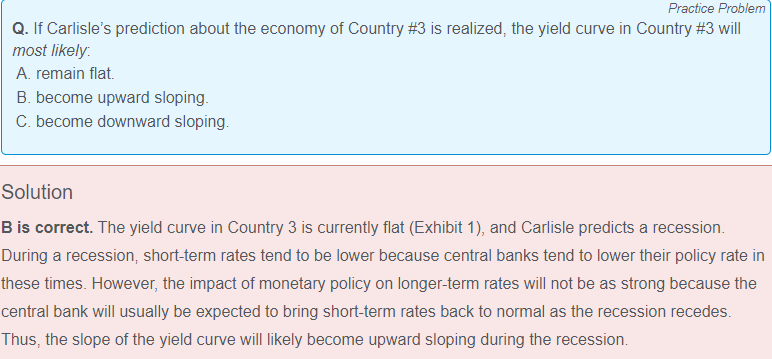Trang chủ › Forums › CFA® program level II › CFA® level II – PORTFOLIO MANAGEMENT › CFA2.PM: recession, thị trường bị khủng hoảng, downward sloping
- This topic has 1 reply, 2 voices, and was last updated 7 months ago by
Le Minh Thanh.
CFA2.PM: recession, thị trường bị khủng hoảng, downward sloping
-
Teaching Assistant
KeymasterHọc viên: Dạ cô cho e hỏi câu này với ạ; e đã đọc qua đáp án của web nhưng e có thắc mắc là vì trước đây e nhớ đã từng đọc qua là khi thị trường bị khủng hoảng thì thường đường cong lợi suất sẽ đảo ngược nghĩa là downward sloping ạ, (hình như e nhớ có đọc qua là us bond yield có inverted vào cuộc khủng hoảng 2008), nên e có chút mâu thuẫn trong đáp án câu này ạ.



Giảng viên: bài này recession có chưa đầy 1 năm thôi thì lãi suất dài hạn không bị ảnh hưởng nên YC không đi xuống được. Lý luận lên xuống gì thì cũng phải dựa vào kỳ vọng lãi suất các thời kỳ.
Học viên: dạ e cảm ơn cô ạ
21/10/2021
Le Minh Thanh
ParticipantDạ cô ơi cho em hỏi, cũng trong nhóm câu hỏi này
Based on the data in Exhibit 1, current real short-term interest rates would most likely be highest in:
A. Country #1.
B. Country #2.
C. Country #3.
Đáp án là B is correct. Real short-term interest rates are positively related to both real GDP growth and the volatility of real GDP growth. Country 1 and Country 2 have the highest real GDP growth, as estimated by the difference between nominal GDP growth and average inflation (6.5% − 4.0% = 2.5% and 5.0% − 2.5% = 2.5%, respectively), while Country 3 has the lowest real GDP growth (3.5% − 2.0% = 1.5%). Looking at the volatility of real GDP growth, Country 2 has high real GDP growth volatility, whereas Country 1 and Country 3 have low real GDP growth volatility. Therefore, Country 2 would most likely have the highest real short-term interest rates.
Em chọn A vì em thấy The differences between nominal GDP growth and average inflation of countries 1 and 2 are both 2.5%, but country 2 has high volatility of GDP. In common sense, I suppose a part of the difference compensates for the high volatility => country 1 has higher real short-term interest rates.
Cô có thể giải thích thêm được không ạ?
You must be logged in to reply to this topic.
